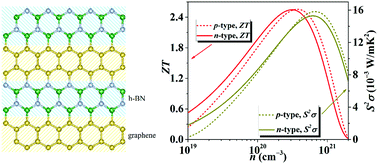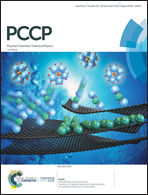Realizing high thermoelectric performance with comparable p- and n-type figure-of-merits in a graphene/h-BN superlattice monolayer
Abstract
Carbon-based structures are a superior alternative for unleashing the thermoelectric potential of earth-abundant and environmentally friendly materials. Here we design a hybrid graphene/h-BN superlattice monolayer and investigate its thermoelectric properties based on density functional theory and accurate solution of Boltzmann transport equations. Compared with that of pristine graphene, the lattice thermal conductivity of the superlattice structure is more than two orders of magnitude lower ascribed to the significantly increased phonon scattering originating from the mixed-bond characteristics. Besides, the obvious valley anisotropy near the electronic band edge leads to an ultrahigh power factor along the zigzag direction, which in turn gives an n-type ZT value as high as 2.5 at 1100 K. Moreover, it is interesting to find that the thermoelectric performance of p-type system can be enhanced to be comparable with that of n-type one by appropriate substitution of the nitrogen atom with phosphorus, which can suppress the lattice thermal conductivity but nearly have no effect on the hole transport.



 Please wait while we load your content...
Please wait while we load your content...